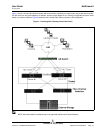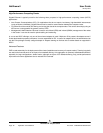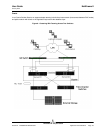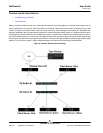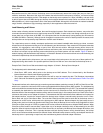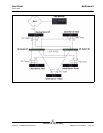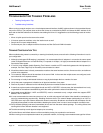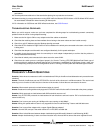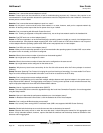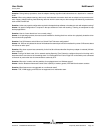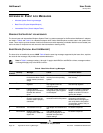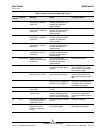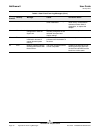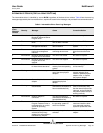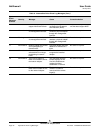
User Guide NetXtreme II
January 2010
Broadcom Corporation
Document ENGSRVT52-CDUM100-R Frequently Asked Questions Page 55
and fallback.
15. Test the performance behavior of the team before placing into a production environment.
16. Network teaming is not supported when running iSCSI traffic via Microsoft iSCSI initiator or iSCSI offload. MPIO should
be used instead of Broadcom network teaming for these ports.
17. For information on iSCSI boot and iSCSI offload restrictions, see iSCSI Protocol.
TROUBLESHOOTING GUIDELINES
Before you call for support, make sure you have completed the following steps for troubleshooting network connectivity
problems when the server is using adapter teaming.
1. Make sure the link light is ON for every adapter and all the cables are attached.
2. Check that the matching base and intermediate drivers belong to the same release and are loaded correctly.
3. Check for a valid IP Address using the Windows ipconfig command.
4. Check that STP is disabled or Edge Port/Port Fast is enabled on the switch ports connected to the team or that LiveLink
is being used.
5. Check that the adapters and the switch are configured identically for link speed and duplex.
6. If possible, break the team and check for connectivity to each adapter independently to confirm that the problem is
directly associated with teaming.
7. Check that all switch ports connected to the team are on the same VLAN.
8. Check that the switch ports are configured properly for Generic Trunking (FEC/GEC)/802.3ad-Draft Static type of
teaming and that it matches the adapter teaming type. If the system is configured for an SLB type of team, make sure
the corresponding switch ports
are not
configured for Generic Trunking (FEC/GEC)/802.3ad-Draft Static types of teams.
FREQUENTLY ASKED QUESTIONS
Question: Under what circumstances is traffic not load balanced? Why is all traffic not load balanced evenly across the team
members?
Answer: The bulk of traffic does not use IP/TCP/UDP or the bulk of the clients are in a different network. The receive load
balancing is not a function of traffic load, but a function of the number of clients that are connected to the server.
Question: What network protocols are load balanced when in a team?
Answer: Broadcom’s teaming software only supports IP/TCP/UDP traffic. All other traffic is forwarded to the primary adapter.
Question: Which protocols are load balanced with SLB and which ones are not?
Answer: Only IP/TCP/UDP protocols are load balanced in both directions: send and receive. IPX is load balanced on the
transmit traffic only.
Question: Can I team a port running at 100 Mbps with a port running at 1000 Mbps?
Answer: Mixing link speeds within a team is only supported for Smart Load Balancing™ teams and 802.3ad teams.
Question: Can I team a fiber adapter with a copper Gigabit Ethernet adapter?
Answer: Yes with SLB, and yes if the switch allows for it in FEC/GEC and 802.3ad.
Question: What is the difference between adapter load balancing and Microsoft’s Network Load Balancing (NLB)?
Answer: Adapter load balancing is done at a network session level, whereas NLB is done at the server application level.



